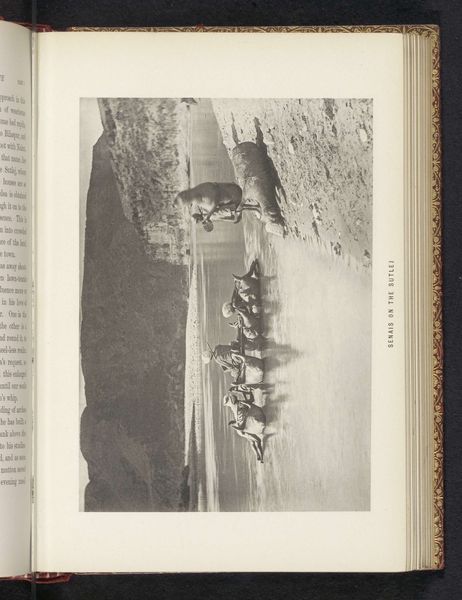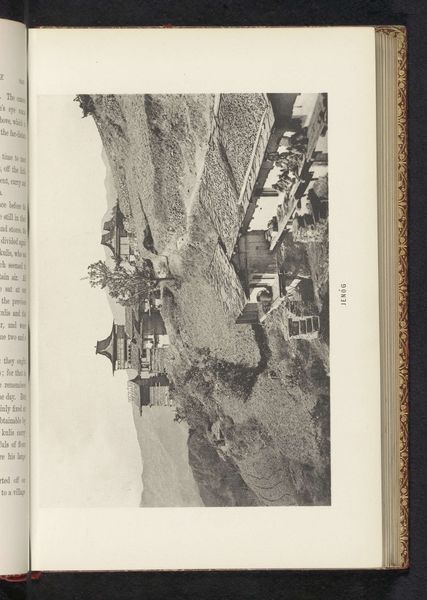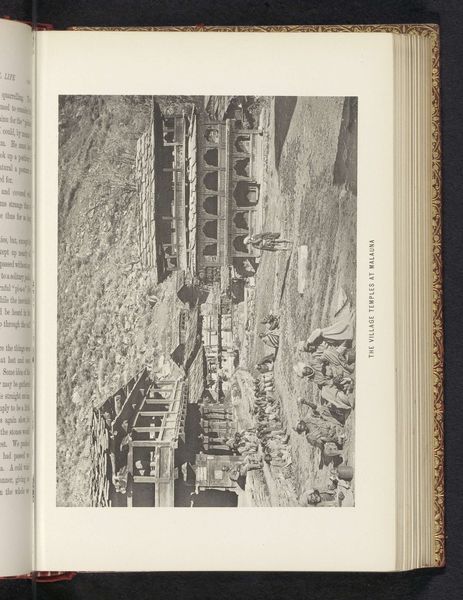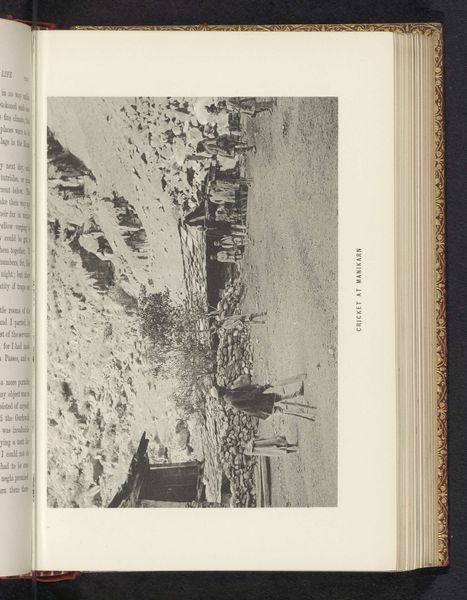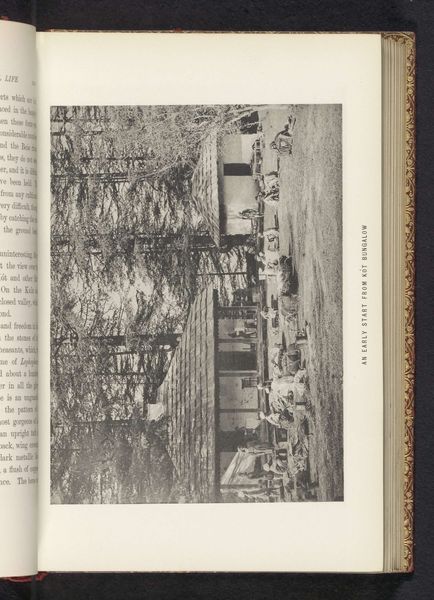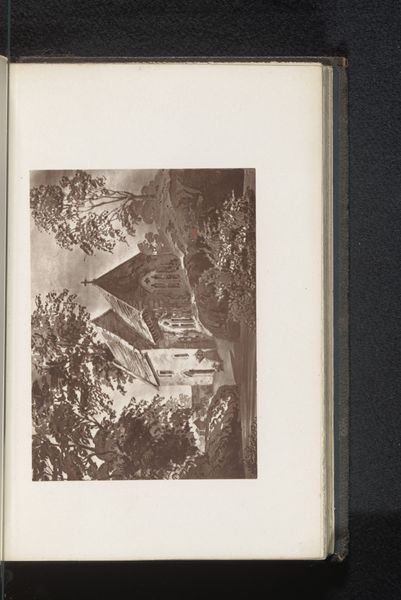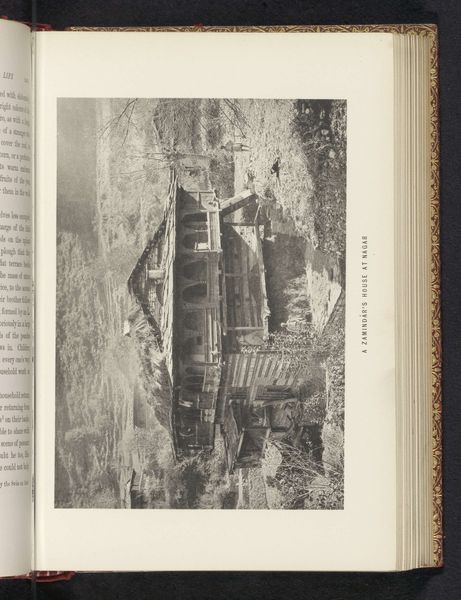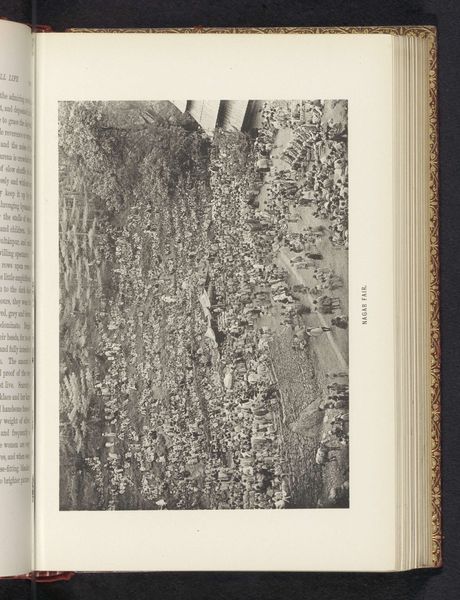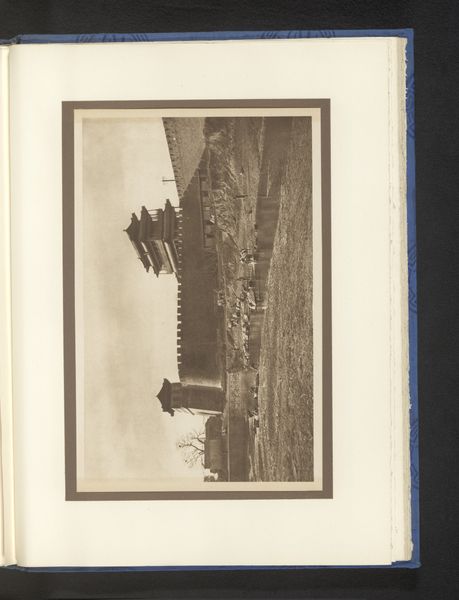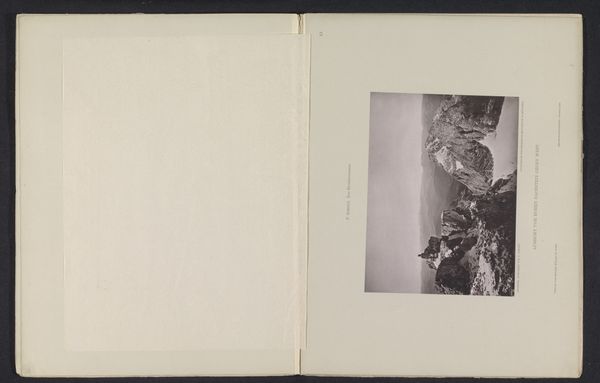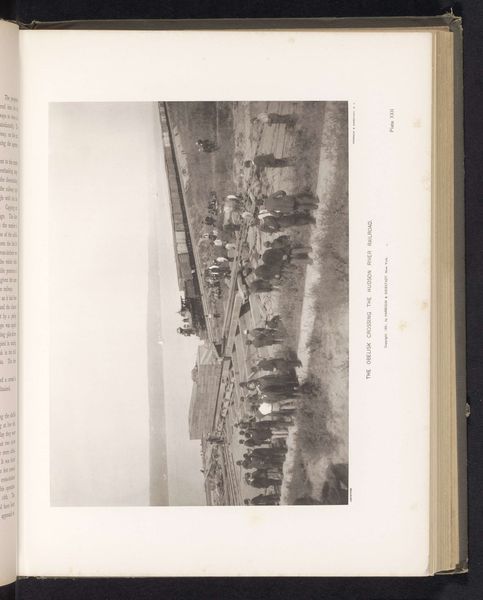
photography, gelatin-silver-print
#
landscape
#
photography
#
gelatin-silver-print
Dimensions: height 128 mm, width 169 mm
Copyright: Rijks Museum: Open Domain
Curator: Let's delve into this gelatin silver print from before 1895 titled "Village God. Kataula," attributed to Frederick Saint John Gore. Immediately, it feels like a glimpse into a world untouched by time, a serene harmony with the mountainous landscape. Editor: Harmony is one way to put it. I’m struck by the starkness—the almost brutal relationship between the people, their structures, and the hard, unforgiving land. Look at the way the building is constructed and almost blends with the slope it rests on. Curator: Precisely. Gore, though perhaps an outsider, offers a look at the cultural and social interactions within this isolated village community, as evidenced by the central gathering. Editor: It's not just about the people; look at the materials. We're talking about stone, wood, things wrested directly from the environment and transformed through labor into a structure, instruments, possibly tools, etc.. That reliance speaks volumes. Curator: It does highlight the immediacy of their lives. But I also think this image serves a crucial documentary function, a preserved record that, from today's perspective, might shape understandings of indigenous social rituals. The implied communal activity surrounding the deity creates that impression, what do you think? Editor: It's all those drums placed down low... the position to worship something greater than life. But I'm also pondering how Gore himself shaped that record. What was his intent and relationship with this village? His choice to photograph this event and make it publicly accessible reshapes it forever. Curator: Of course, his gaze is something to consider, though his privileged background as member of nobility afforded him a privileged status to take photographs as an outsider in these areas. How was that portrait used to establish those power relations, or was this really an innocuous look into religious and social relations. Editor: Power isn’t just a structural thing; it is woven into the making. Those who labored to make these instruments possible likely faced challenges we never considered. How did they procure the raw materials for their instruments and housing in the village of Kataula? What value do those products now embody now in terms of colonial extraction. Curator: So, while this photograph may appear on the surface to be a tranquil depiction, the complexities it unveils through discussions about both the social setting, and production value are critical to acknowledge. Editor: I agree. It’s a reminder that any image carries not only aesthetic value but, imbedded within it, traces of both history and hands.
Comments
No comments
Be the first to comment and join the conversation on the ultimate creative platform.
